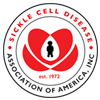Trusted Resources: Evidence & Education
Scientific literature and patient education texts
Children and adolescents with sickle cell disease have worse cold and mechanical hypersensitivity during acute painful events
source: Pain
year: 2018
authors: Brandow AM, Hansen K, Nugent M, Pan A, Panepinto JA, Stucky CL
summary/abstract:Sickle cell disease (SCD) pain associates with cold temperature and touch. Patients and murine models with SCD have baseline thermal and mechanical pain. In SCD mice, the baseline hypersensitivity is exacerbated by experimental vaso-occlusive crises. We hypothesized that patients with SCD will similarly experience increased hypersensitivity to thermal and mechanical stimuli during acute painful events compared with baseline health. We conducted a prospective study of 24 patients with SCD aged 7 to 19 years. Patients underwent quantitative sensory testing to thermal (cold/heat) and mechanical stimuli on the thenar eminence of the nondominant hand (glabrous skin) and the lateral dorsum of the foot (hairy skin) during baseline health and within 48 hours of hospitalization for acute pain.
Primary outcomes were changes in: (1) cold pain threshold (°C), (2) heat pain threshold (°C), and (3) mechanical pain threshold (g). Median age was 10.5 (interquartile range [IQR] 9-14.8) years, 67% were females, and 92% were on hydroxyurea. Patients with SCD had increased cold pain sensitivity in the hand during hospitalization compared with baseline (25.2°C [IQR 18.4-27.5°C] vs 21.3°C [IQR 4.9-26.2°C]; P = 0.011) and increased mechanical pain sensitivity in the foot during hospitalization (0.32 g [IQR 0.09-1.1 g] vs 1.7 g [IQR 0.4-8.3 g]; P = 0.003). There were no differences in heat pain sensitivity. The increased cold (P = 0.02) and mechanical (P = 0.0016) pain sensitivity during hospitalization persisted after adjusting for age, sex, hydroxyurea use, opioid consumption, and numeric pain score. Thus, cold and mechanical pain is significantly worse during an acute SCD painful event as compared to baseline health in patients with SCD.
organization: Medical College of Wisconsin, USA; Children's Research Institute of the Children's Hospital of Wisconsin, USADOI: 10.1097/j.pain.0000000000001407
read more full text
Related Content
-
Impact of Arginine Therapy on Clinical Outcomes, Mitochondrial Function and Oxidative Stress in Children With Sickle...Introduction: Vaso-occlusive pain episo...
-
Addressing challenges of clinical trials in acute pain: The Pain Management of Vaso-occlusive Crisis in Children and...BACKGROUND/AIMS: Neuropathic pain is a k...
-
A multiple drug approach to preventing sickle cell crisisSickle cell disease is characterized by ...
-
GBT expands sickle cell disease pipeline with worldwide licensing agreement for inclacumab for the treatment of vaso...Global Blood Therapeutics, Inc...
-
New Guidelines for Managing Sickle Cell Disease Presented at ACP Internal Medicine MeetingNew guidelines for therapeutic strategie...
-
CTX001 Continues to Show Promise in Severe SCDA single dose of CTX001, an experimental...
-
Living With Sickle Cell Disease Is a Constant Battle With Pain, According to one Woman Who Has It“You don’t look sick.” That’s ...
To improve your experience on this site, we use cookies. This includes cookies essential for the basic functioning of our website, cookies for analytics purposes, and cookies enabling us to personalize site content. By clicking on 'Accept' or any content on this site, you agree that cookies can be placed. You may adjust your browser's cookie settings to suit your preferences. More Information
The cookie settings on this website are set to "allow cookies" to give you the best browsing experience possible. If you continue to use this website without changing your cookie settings or you click "Accept" below then you are consenting to this.




 +myBinder
+myBinder
